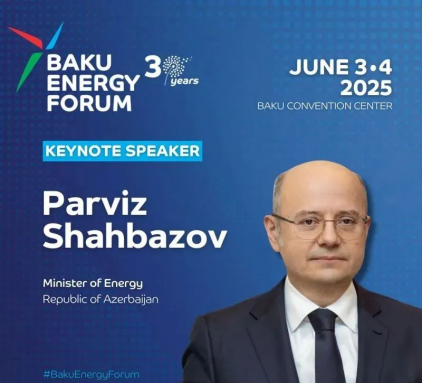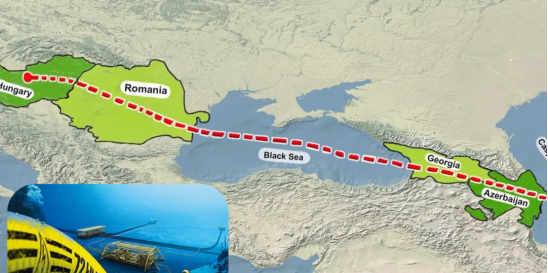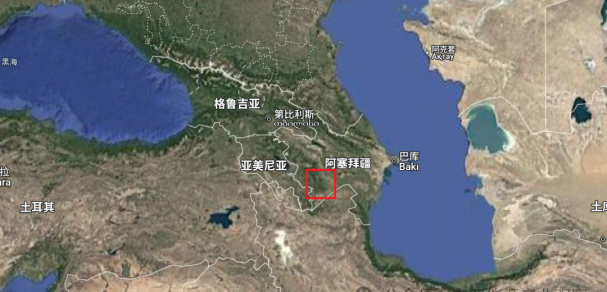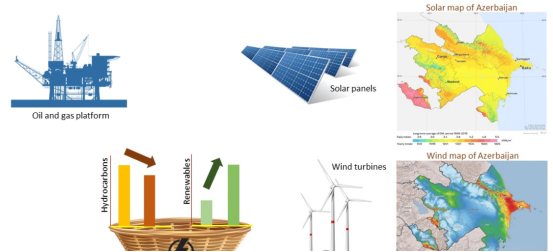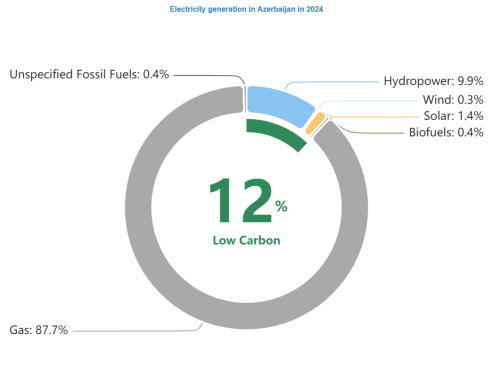NEWS CENTER
|
|
Azerbaijan: Investing $2.7 billion to build renewable energy projects + accelerating the Caspian-European Green Energy Corridor to fully meet Europe's energy needs!Azerbaijan's Energy Minister Parviz Shahbazov said at the Baku Energy Forum in the capital Baku that the "first phase" of Azerbaijan's energy transformation will be completed within two years, including a 240 MW wind farm expected to be completed by the end of 2025, and three photovoltaic projects with a total installed capacity of 200 MW, which will start construction in the second half of this year. In addition, a 100 MW floating photovoltaic project is also under preparation.
The ministry said the plan would increase the share of renewable energy in installed capacity to 33.7% by 2027, with a target of 38% by 2030 and 42.5% by 2035. At least eight projects with a total installed capacity of 2.2 GW are currently under construction or in the detailed planning stage, including BP’s 240 MW Shafag PV project in Jabrayil and Nobel Energy’s 400 MW project in the Nakhchivan region.
To export electricity, Azerbaijan is working with Georgia, Romania and Hungary to build a 1 GW high-voltage direct current transmission line called the Caspian-Black Sea-European Green Energy Corridor. The line is in line with the EU's decarbonization goals and will transmit excess electricity directly to the continental European grid.
The push for renewable energy is part of the Armenian government’s broader strategy to reduce greenhouse gas emissions by 40 percent by 2050 and establish a net-zero emissions zone in the Nagorno-Karabakh territory retaken from Armenia. In addition, the Azerbaijani government is building 60 small hydropower plants in the Garabagh and eastern Zangazur regions, 32 of which are already in operation.
Analysts say the shift allows oil-rich Azerbaijan to continue to cement its position as a reliable energy partner for Europe while helping European countries diversify their energy sources away from dependence on Russian supplies. According to data provided by the Russian Ministry of Energy of Azerbaijan, the Azerbaijani government's investment in wind power, photovoltaics and energy storage is expected to increase by at least 6 gigawatts between 2027 and 2030, most of which will be used for export.
2024 , Azerbaijan's electricity consumption is mainly dependent on fossil fuels, with more than 88% of electricity coming from fossil fuels, with natural gas alone accounting for about 88%. In contrast, low-carbon electricity sources such as hydropower and photovoltaics account for nearly 12% of the country's electricity generation, of which hydropower dominates at nearly 10%. Photovoltaics remains a small but important component, at about 1.4%. This shows that Azerbaijan has great potential to develop a clean energy industry and reduce its dependence on fossil fuels. Azerbaijan's electricity consumption has not yet returned to its historical peak. In 2024, the per capita electricity consumption was about 2,818 kWh, which is more than 500 kWh less than the peak of 3,329 kWh in 1988. In addition, the current per capita renewable energy generation is about 337 kWh, which is 40 kWh less than the peak in 2010. The Azerbaijani government believes that expanding the scale of renewable energy will curb domestic natural gas use, free up more petrochemical products for export and earn foreign exchange, and supplement state revenue during the transition to clean energy. |

